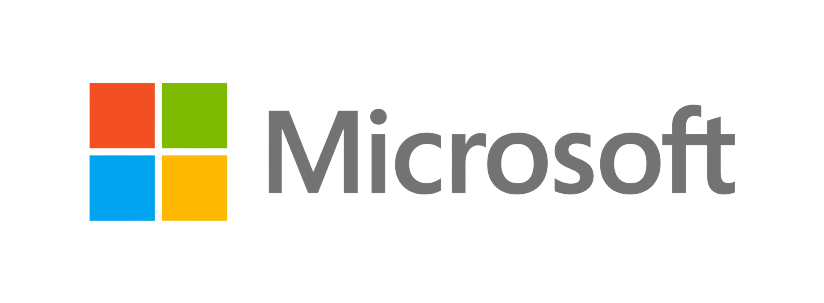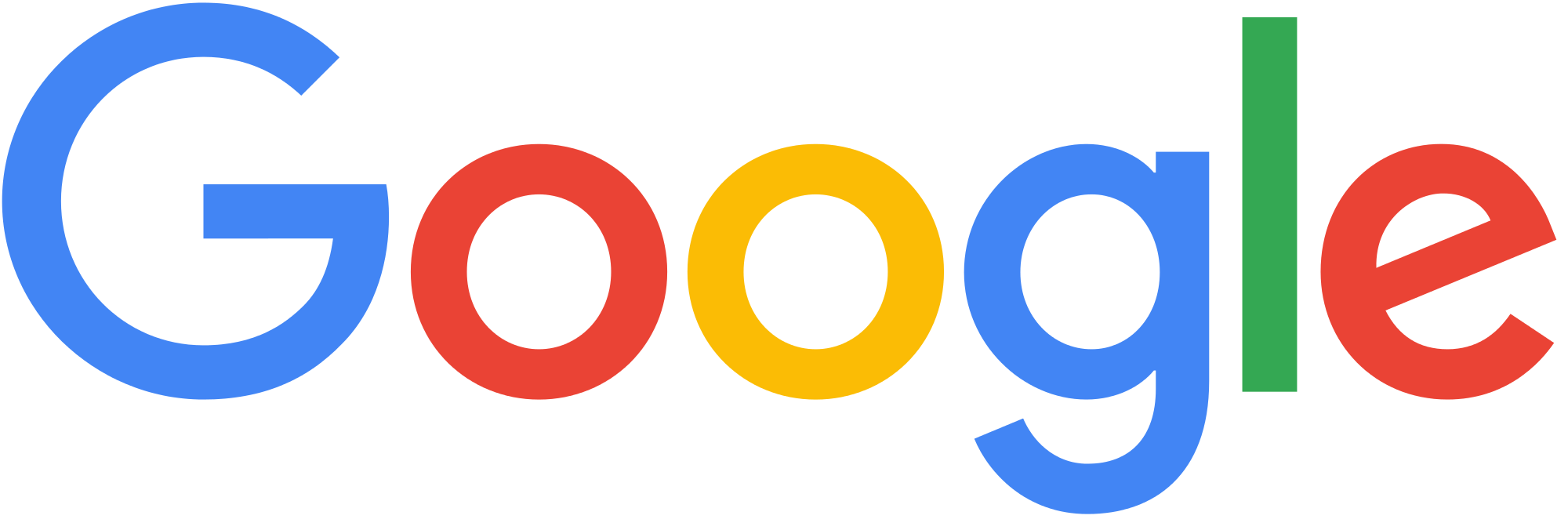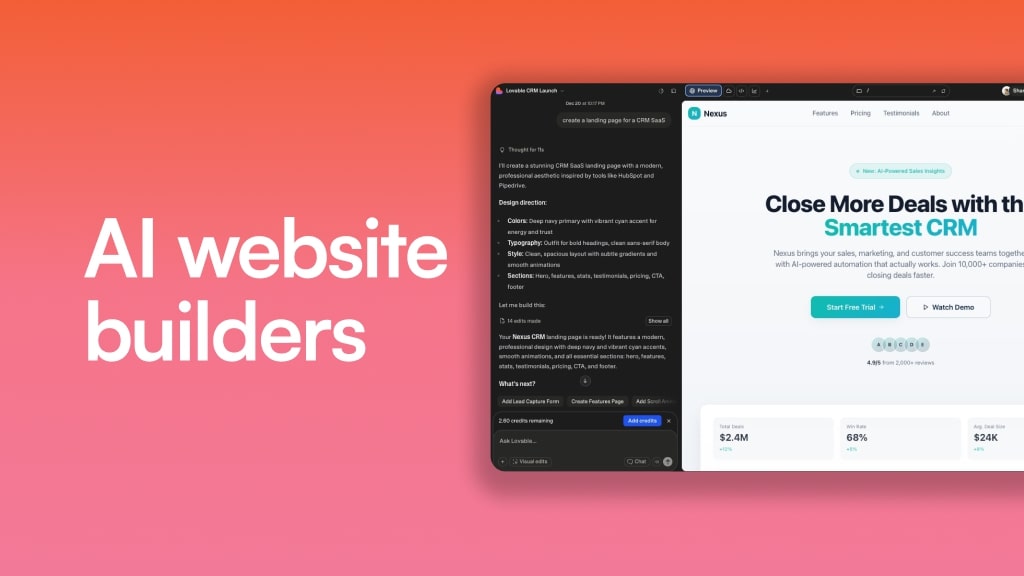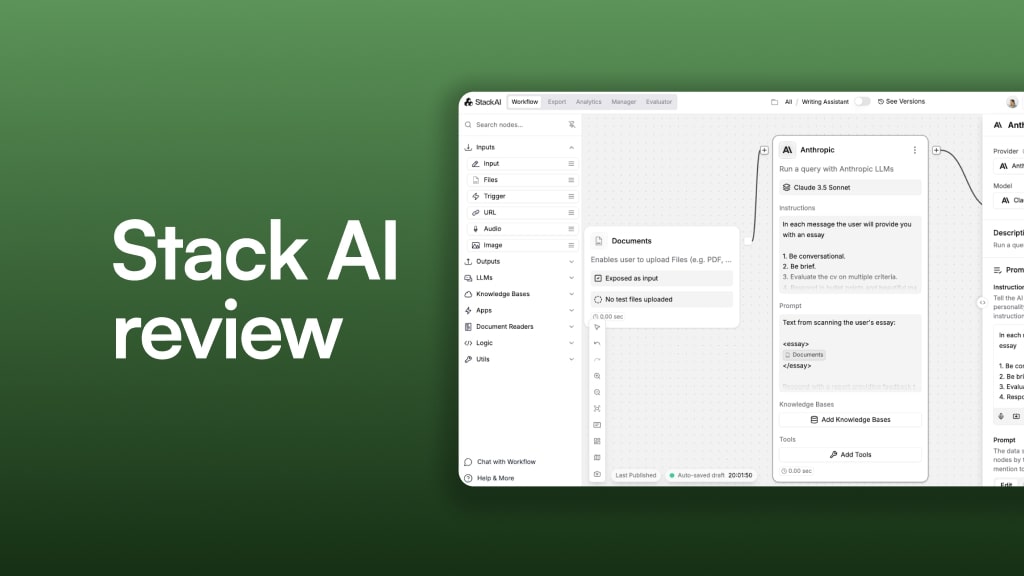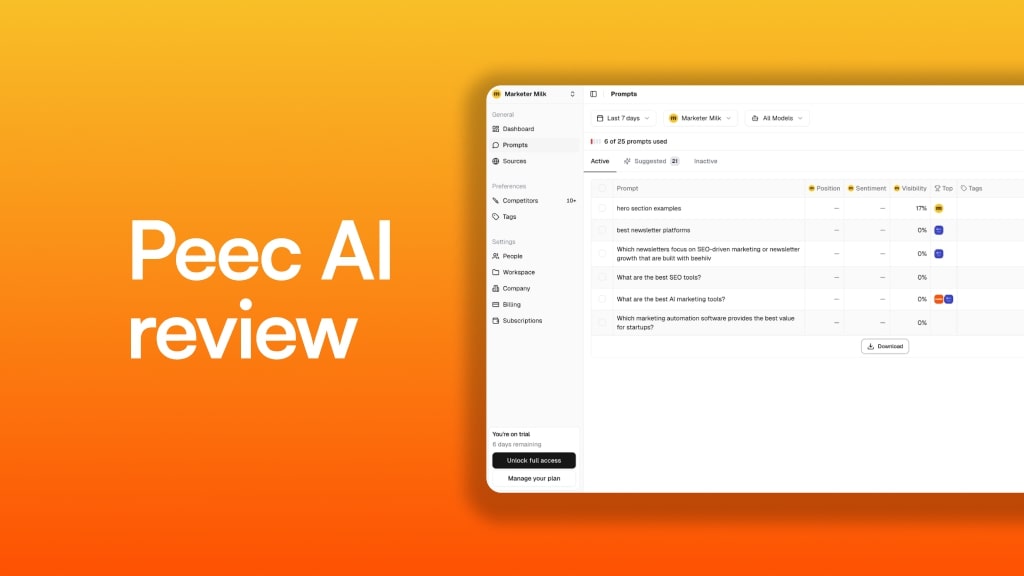AI is both the worst and best technological invention (besides the internet) during my time here on this earth.
It's the worst because it's bred AI grifters and companies that just slap on the word "AI" into their marketing to sound like they're building a revolutionary product.
It's made so many people lose their jobs.
It's made marketers a bit scared, confused, and overwhelmed on what the future of our careers will look like.
And I would be lying if I said it didn't totally freak me out.
But my sentiment around it has slowly started to change over the past 3 years of trying to figure this thing out.
What is it, what does it do, what is it good for, and how can it actually help me with my work.
It wasn't until March of this year when I got the opportunity to fly out to San Francisco and consult with an AI-first company called Gumloop.
It was the most intense and awesome 2 weeks of this year for me (so far), and through that, my eyes completely opened.
I saw the power in using AI to help you code, automate tasks, refine ideas, and even write.
But it wouldn't be until May of this year that I started to dive headfirst into building workflows and teaching myself to code with it to build internal tools that I finally gained the clarity I've been looking for for the past 3 years.
Forget all the AI SaaS tools popping up. Forget all the generic "AI marketing workflow" templates. Forget it can replace you at work. Forget trying to figure out what you're supposed to automate.
Take a deep breath.
If there's one thing I've learned about AI it's this: you can't automate what you can't teach someone else to do.
AI is not designed (at least today) to help you do something completely new and original. Humans do that.
AI is designed to help you do things you would have already done, but better and faster.
So I want to give you a mental model on how to think about using AI. A frame of mind that will set you up for success in coming up with your own ways of using it. And I’ll show you how I’m using it.
An AI mental model
What does AI stand for? Artificial Intelligence.
Now, what if we rebranded it to AH — Artificial Human.
Because that's what it really is, it's a computerized person. And just how humans have different characteristics, specialties, and personalities. So does AI.
Well, AI models that is.
Different AI models are used for different things. There are reasoning models, that are really good at having a back and forth conversation with to refine your ideas. And then there are "agentic" models that are great at executing on tasks: coding, writing, creating images, generating videos, etc.

Now, if we look at it through this lens, we start to see AI a bit differently in what it can do for us.
Let's take a classic tech company org chart. At most tech startups, there's usually this hierarchy of employees:
- Director level: This person has the vision, goals, and understands the direction the company needs to go. From there, they help a manager on the team see that vision so they can steer the ship in the right direction.
- Manager level: The manager works closely with the director to understand their vision and turn that vision into a strategy, plan, or roadmap that will hit the right goals. The manager then hands that plan to an individual contributor.
- IC level: The individual contributor works to understand the manager's plan and then executes on it to pull the right levers that will ultimately get the company to accomplish its goals (and get closer to its vision).
This is an overgeneralized view, but I think it's a good mental model to think through.
Of course, some companies have VP's and C-Suite executives. But this 3-tiered hierarchy is simple to understand. And yes, at some smaller startups, there are people who act as both a manager and an IC — these are usually "Head of Marketing" or "Growth Lead" roles you see at small (I'm talking like 10-people) companies.
Now, how does AI fit here? Let's break it down:
- Director: This is YOU. It will always be you. You understand the vision and you know better than anyone what direction makes the most sense to steer the ship.
- Manager: This is an AI model that is good at reasoning. Currently, at the time of writing this, the best one I've found is ChatGPT o3 or Claude Sonnet 4. I prefer o3.
- IC: This is an AI model that is "agentic" and can execute on tasks. Currently, at the time of writing this, the best ones I've found are Claude Opus 4 or ChatGPT 4o. I prefer Opus 4.
Through this mental model, you can start to get a better idea of where you and different AI models fit into your entire workflow. From the vision to the final product that is shipped.
The thing to note is that you are still involved in almost all of the levels. But your involvement decreases as the levels go down. You are 100% the director, you are probably 60% the manager, and about 10-20% of the IC.
But do you see what this can unlock? For the first time, 1 person can do what 2-3 people used to do.
Okay, now let's look at how I'm using it and a couple examples of real workflows.
How I'm using AI
My AI workflow stack, excluding any AI SaaS tools, looks like this:
- Director: Me
- Manager: Me + ChatGPT o3
- IC: Claude Opus 4 + a little bit of me
To get access to ChatGPT o3, you will have to be on the $20/month OpenAI paid plan.

And same goes for Claude Opus 4, you need to be on the $20/month Anthropic paid plan.

Together, it totals to $40 per month — which is ridiculously cheap for what it does. I would still pay $500/month for each based on how much value it delivers.
You might have an idea or existing workflow for what you want to use AI for, but let me give you a couple examples from myself on how I'm using this.
Learning how to code + building internal tools
This is by far the best use case of AI I've seen to date. And not being afraid to get my hands dirty in learning technical stuff (I'm by default a non-technical marketer), is actually how I've been able to become a better AI-powered marketer.
There are a lot of different AI tools for "vibe coding" that are growing fast: Lovable, Bolt, Replit AI, Tempo Labs.
I've experimented with them all. And my favorite one is Tempo Labs (mostly because of how easy it can spin up a database and even connect to Stripe). I also like that not many people use it compared to Lovable or Bolt (idk I'm just like that, I don't like mainstream stuff lol).
But regardless of the vibe coding tools out there, there's no question that the end product they create is 100% based on the human using the tool and how they prompt it.
So here's my workflow:
- Director: I see something in my business that can potentially be automated or improved with AI, whether it's for my client services or my media company. I've identified a potential tool I can build that will improve my workflow by making it both faster and more accurate. (I will reveal this in due time. I don't want to make any tools available that are half-baked.)
- Manager: I go back and forth with ChatGPT o3 as if it's my CTO (chief technical officer). I have a full conversion with it (I usually do this using the voice feature. Not the one that speaks back to you with an AI voice, but the one that you just use speech to text and then click send after the text you spoke out loads). ChatGPT o3 then helps me come up with a plan on how to build a certain tool, tells me any edge cases, and I ask it to help me give it any more information it needs to create a plan for the build. And then, I tell it that I'm going to be using Tempo Labs, which uses Claude to write its code. Based on this, it helps me create a product feature roadmap and I ask it to give me detailed prompts that I can feed to Claude inside of Tempo Labs.
- IC: I copy the prompt from ChatGPT and then go to Claude, inside of Tempo Labs, and paste in the prompt. When it's done coding, I go back to my "Manager" ChatGPT o3 and tell it the progress and to give me the next prompt to give my IC "Claude 4". And I have this back and forth (prompt generation in ChatGPT, then pasting it for execution in Tempo Labs) until I've built an internal tool.
Through this process, I've not only been able to slowly learn how to code, but it's been extremely empowering. It's been full of eye opening moments that have made me see what AI truly can be used for, and what models work the best.
And this workflow has allowed me to translate the Director, Manager, and IC first-principles thinking into marketing as well. So let’s look at an AI marketing workflow.
Creating content that moves the needle
I'm going to reveal something I probably shouldn't but screw it, I'm an open book (sometimes to my own detriment).
I've been using AI to help me refine some of my writing. Not my newsletter (I explain why in the last part of this post), and definitely not my in-depth blog post guides. But I have been experimenting with it for a client and also a few blog posts here and there that are not for my core audience.
I've mentioned before in a previous newsletter edition that I've been loving Claude to act as an AI proofreader. I think a lot faster than I can type (as many of us do). So when I set out to write a specific type of blog post, I'll either just completely speak out the entire blog using speech to text in a Google Doc (with a million grammar errors) or I'll create a blog outline and then write detailed scattered thoughts for each section. It's still me, my original thinking, and the angle and message I want to get across. I then feed this to my “IC” (Opus 4) to help me take an 80% done, but completely scattered and messy draft, to a 100% clean and readable piece of work.
But this is only effective using what I'm about to tell you. And this one is a bit different than the coding workflow because the lines are much blurred between the manager and IC.
For this workflow, I actually treat the manager and IC as one person (sometimes). I'll still use ChatGPT o3 occasionally for a sanity check on the direction I'm going. But then I'll use Opus 4 as a hybrid reasoning and agentic model (which it can do).
I do it this way because the beauty of Claude is it has a feature called Projects.
So I can create a project for my company and, within that project, I can start multiple different chat threads. The reason I take this approach is because you can upload documents into a project so Claude has total context every time you start a new thread within that project.

I can upload my own personal writing samples and train it on how I write. I can give it a document of words and styling not to use. I can give it context on what my business is and what it does (including links to resources and landing pages). And a clever thing I did was transcribe 11-hours of video content from my content marketing course (which is already a brain dump of 10 years of my knowledge) and uploaded the entire document (it's as long as a novel) into the project.
The project essentially becomes a clone of me. It's trained and has context of everything.
You hear people say that "prompts" are the most important thing and that prompt engineers will rule the AI world. And I think what they're trying to say is that the quality of AI outputs is based on how well you train it, which is 100% true.
Just like you would train a real human on your team, and give them feedback over time to improve, you need to do this with AI as well. And I love that I can train Claude using the project “brain” that I upload all of this training info into.
So as a recap let's recap this workflow:
- Director: I understand the content strategy and what types of content I want to create.
- Manager: I work with ChatGPT o3 to help me see topics I’m not already thinking about and could potential target. But I use my own intuition to find the best keywords. I also use Claude Opus 4, in a project that is my clone, to help me based on the frameworks I've trained it on.
- IC: I use Claude Opus 4 to feed it my outline with scattered thoughts and resources it should link out to. It then helps me draft up a full article that is clear, coherent, and free of any serious grammar mistakes (basically Grammarly on steroids).
Now I have an article ready to go and I upload it to my CMS.
Here's what this actually looked like for a real article I published:
- Director: I want to help marketers discover amazing tools that will truly help them. And I then want to teach them how to use those tools. I don't want to promote tools that do the best marketing and throw money at me to talk to them about.
- Manager: I scrape tool listings, browse Reddit, and also talk to my friends that are angel investors in Silicon Valley on what tools are growing that still barely have any early adopters. I then feed this into Claude Opus 4 and it helps me come up with content ideas and keyword variations (not based on its own understanding, but based on the 11 hours of my own personal course materials and frameworks I fed it).
- IC: I create an outline, speak out everything that needs to be said under each heading, then tell Opus 4 to organize the thoughts and clean up the article for readability and grammar.
And the end result for one of my articles I tested this with? #1 ranking in just 3 hours:

Again, I do not use this for newsletter editions or most of my blog posts. And I didn't use it for this post. My best ideas come from not using any technology whatsoever. Like the idea for this article: it came when I was sitting in a parking lot the other day for 1 hour waiting for a friend while I stared at the trees shimmering in the wind. No music, no looking at my phone.
But when I do use it, it's heavily prompted with my own thoughts. It probably would have taken me 3-4 hours to fully write and edit this in the past. But with this workflow, it took only about 1.5-2 hours. It's not a one-shot solution. But it can help me produce 2 blog posts in a day, when I normally would have had the energy for just one.
Never ever ask AI to write something up for you without you injecting your own original insights, resources, and direction. Similarly to how you would not hire a freelance writer to "just go and figure it out," you should not do that with AI either.
And there we go. I hope you learned something in this post and you now have a better mental model for how you should approach AI.
Where marketers are headed
I only showed you two workflow examples in this post. But it’s just the tip of the iceberg. You can create AI agents and AI marketing workflows to do this whether you run paid ads, create social media content, write case studies as a product marketer, or whatever.
The goal was to show you how to think, so you know what to act on.
The tools won't save you alone, it's how you use them.
What I believe AI is replacing is the IC work that can be easily trained. And to be honest, you want to graduate from that anyways as soon as possible in your career. The real money and career growth comes from strategy and broader vision thinking.
And now you can execute a bit faster with the different AI models out there. But they are not a replacement for knowing what to work on and why to work on it. Yes, the reasoning models can help you learn how to approach a task (like in my coding example), but you still need to know what you’re building. And you still need the proper discernment to know what is right from wrong. But when you do, the agentic models will then help you ship better than most humans can.
Regardless, there's never been a better time to be a marketer. And heck, there's never been a better time to launch that solo side hustle. I truly believe the best marketers eventually realize that they have gained the skills to become an amazing entrepreneur. And now, you can. Whether you decide to quit your job to go full time self-employed, or have a job + your own company with your AI cofounder.
As I learn how to use AI more in my workflows, in an ethical and honest way, I'll be sure to report back to tell you all about it.
Much love, peace out!
Get the weekly newsletter keeping +33,000 marketers in the loop.



